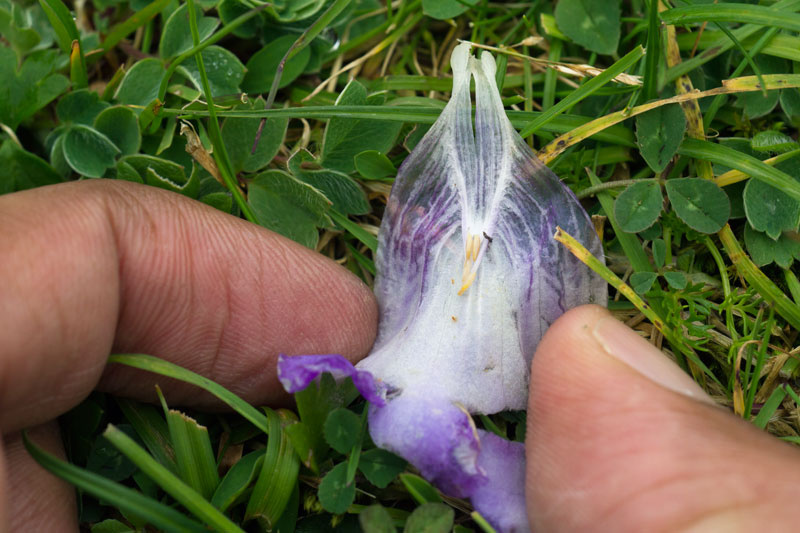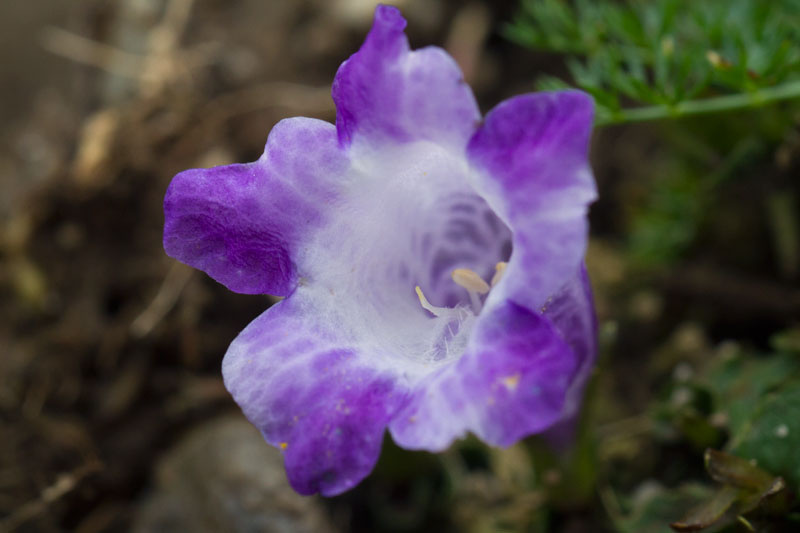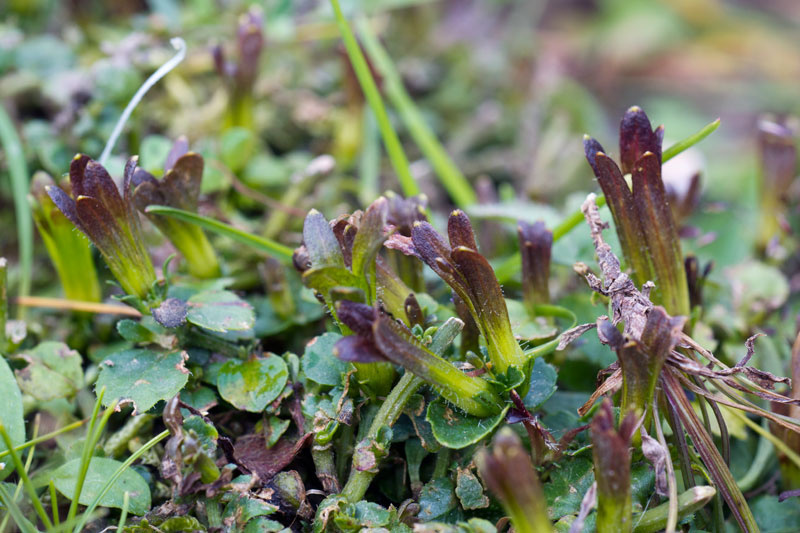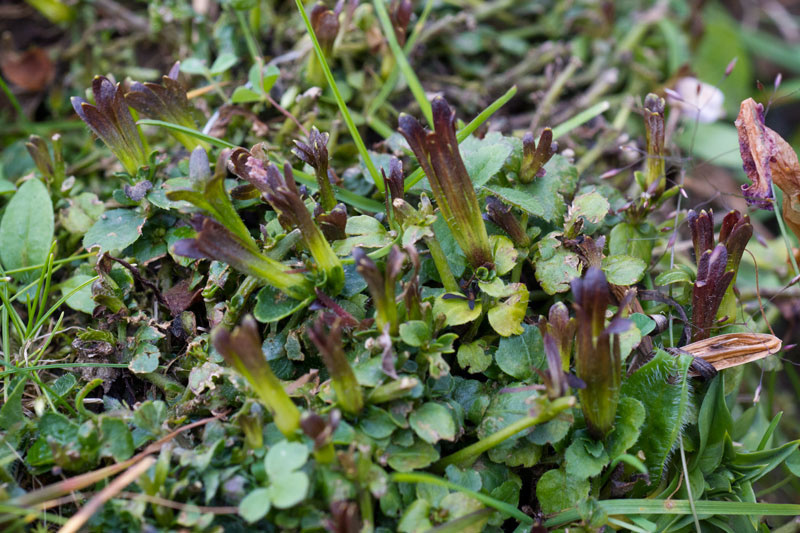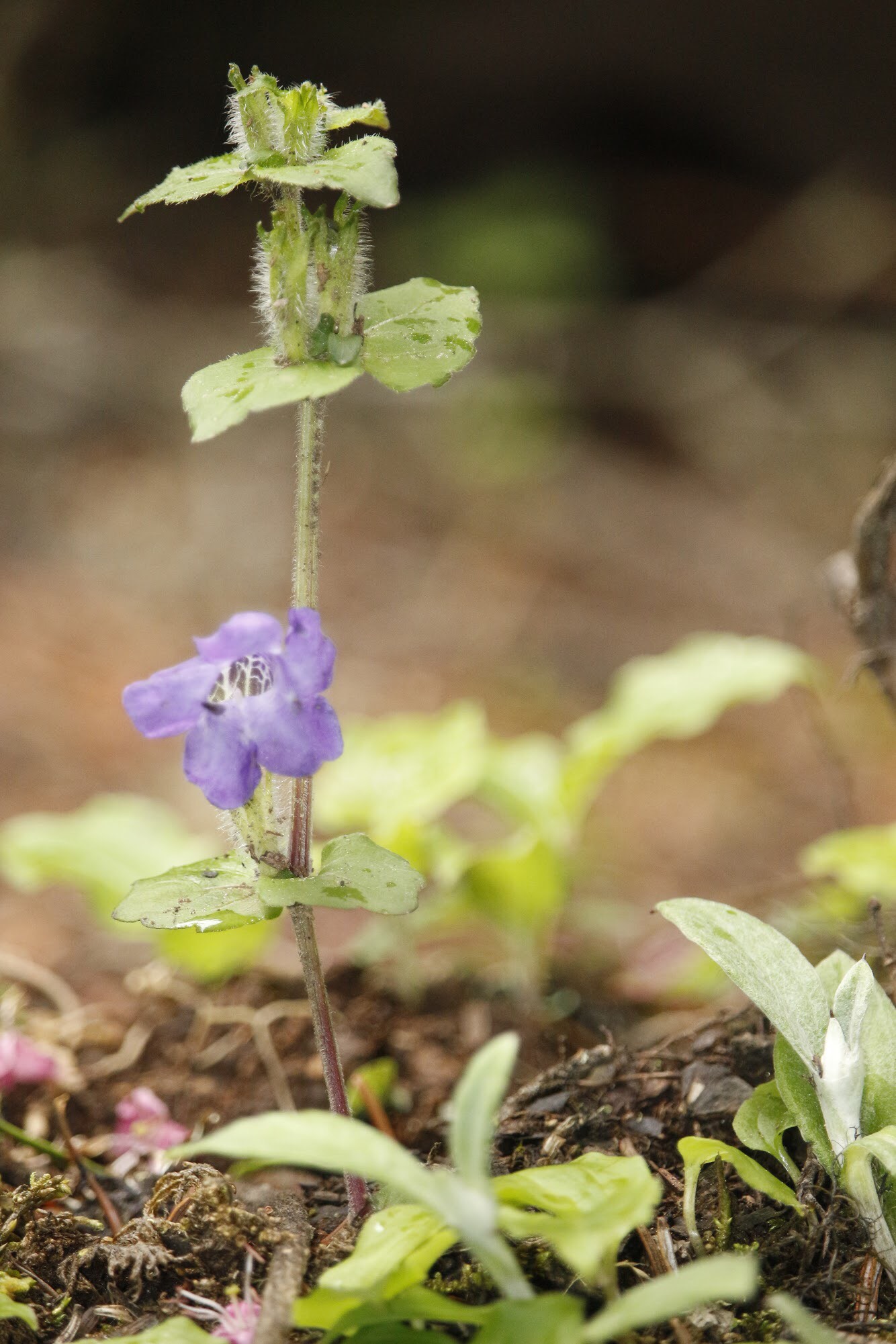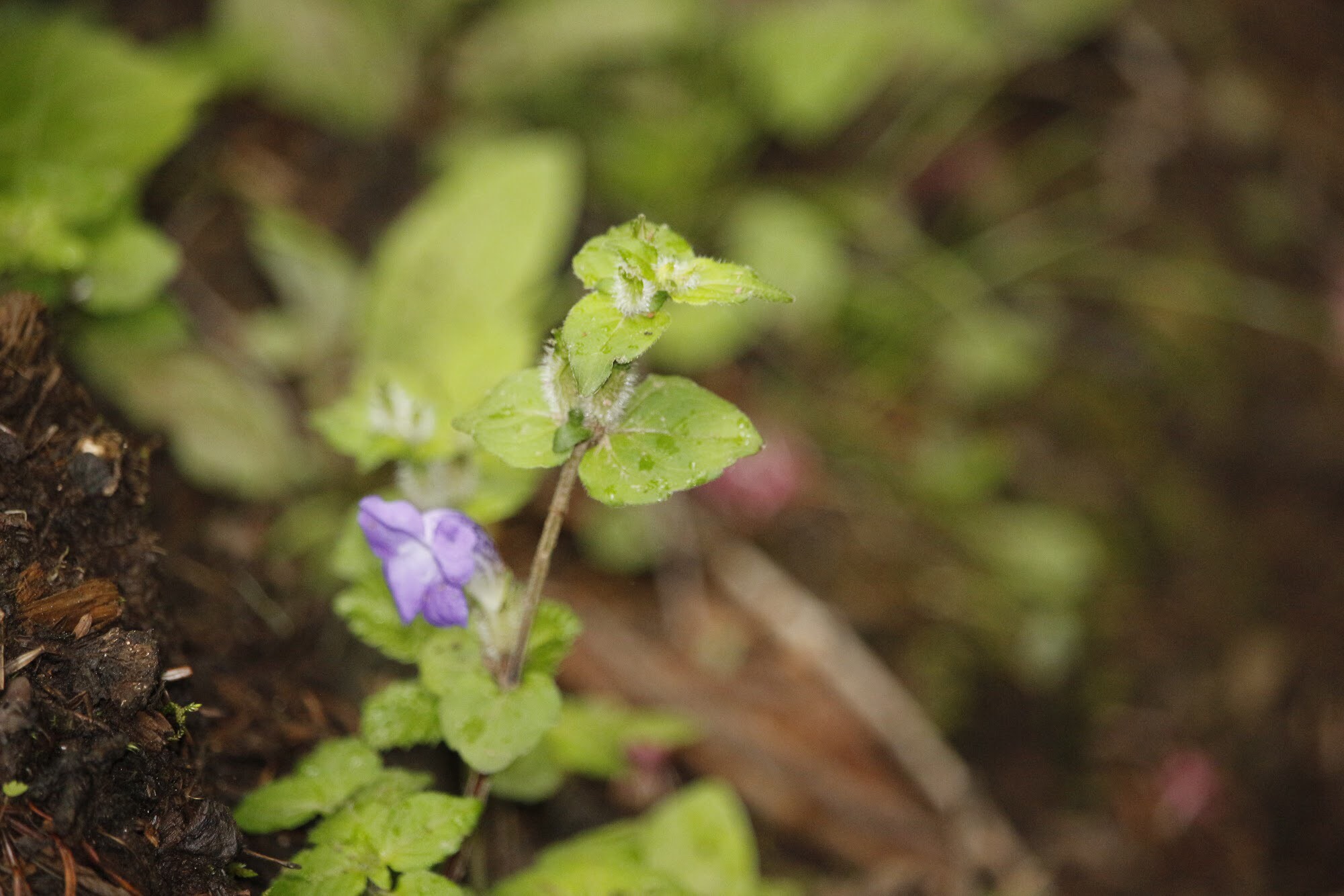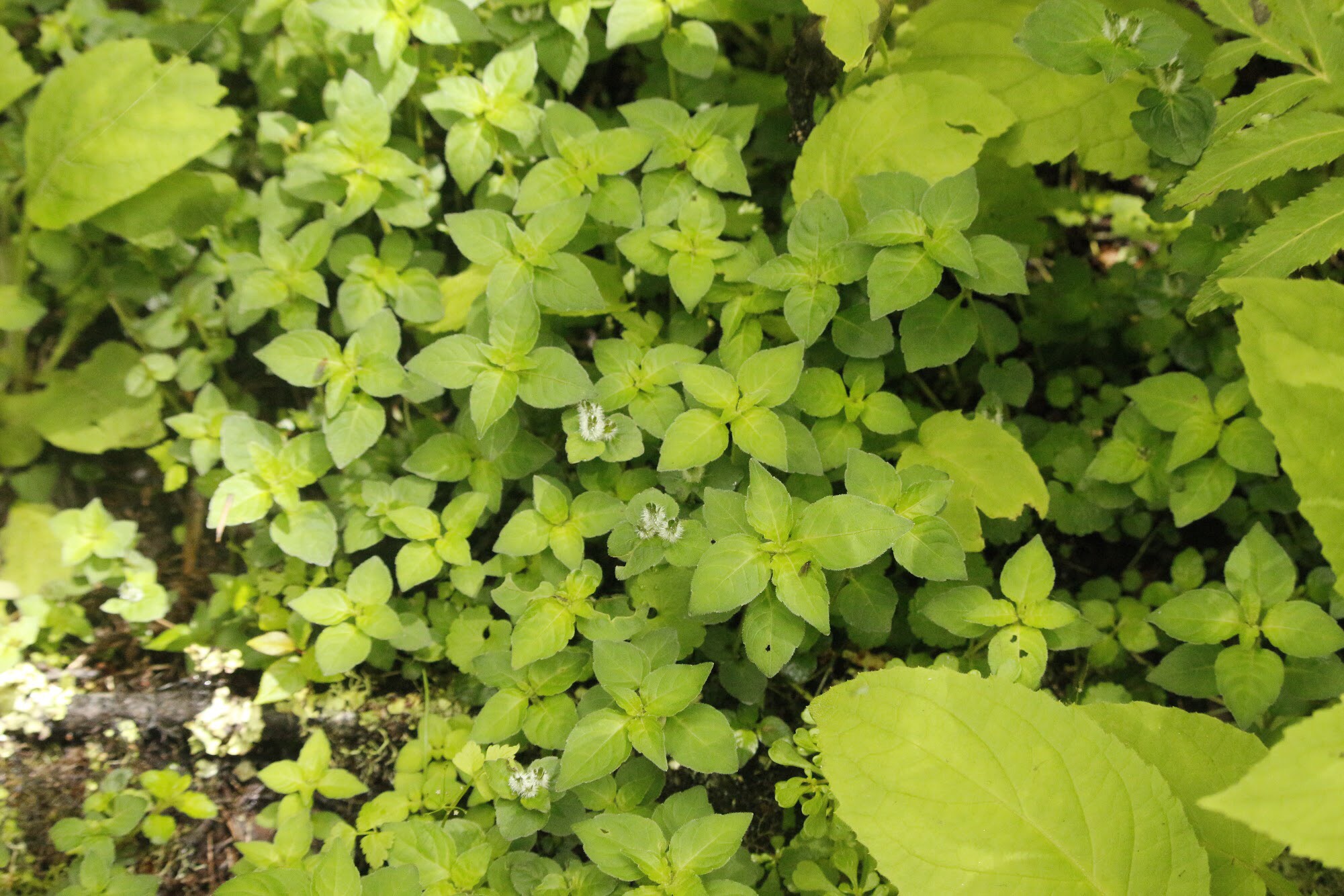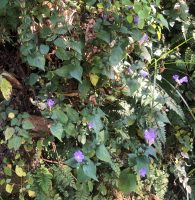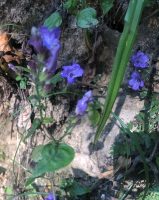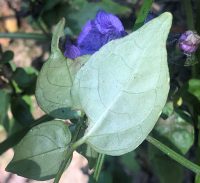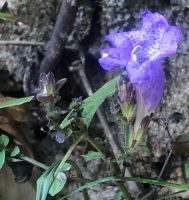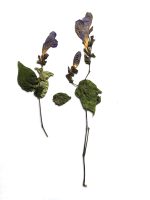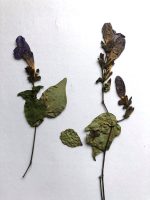|
Strobilanthes atropurpurea Nees, Pl. Asiat. Rar. 3: 86 86 1832. (syn: Hemigraphis cuneata S. Y. Hu; Pteracanthus alatus (Wallich ex Nees) Bremekamp; Ruellia alata Wallich ex Nees; Strobilanthes densa Benoist; S. wallichii Nees; S. wallichii var. microphylla Nees) as per Flora of China;
.
Strobilanthes atropurpurea Nees, Pl. Asiat. Rar. 3: 86 86 1832. (Syn: Ruellia atropurpurea Wall.) as per Catalogue of Life;
.
Nepal, Myanmar [Burma] (Bago, Taninthayi), Bhutan, India (Himalaya, Darjeeling, Chumbi), Jammu & Kashmir (Jammu, Kashmir) as per Catalogue of Life;
.
Common name: Deep-Blue Curved Bells, Hardy persian shield • Nepali: अङ्गारे Angaare, किब्बु Kibbu, जरो बुटी Jaro Buti
.
Acanthaceae for ID ABSEP2016/32 : 5 posts by 2 authors. 5 images.
This ground huuging herb had flowers like Strobilanthes. It could very well belong to that genus but I cannot seem to find a match. Please help.
Ilaqa, Above Triund, Himachal Pradesh, 3300m This plant is probably an odd form of Strobilanthes atropurpurea, but is it certainly odd!. The curved corolla, glabrous on the exterior, the subequal linear-oblong obtuse calyx lobes and the suborbicular leaves are very typical of that species. However I have never seen such a dwarf specimen. Thanks, … Some details from post are as below: The area is heavily grazed as it is used by local shepherds who move their flock of sheep and goats and some cows in the late summer and stay there till the end of monsoon. Some of the other species I recorded in the immediate area were Anemone, Bupleurum, Dock, Hackelia, and Polygonum. I did not see any other Strobilanthes. I am including a photo of the area to give an idea about the habitat. Thanks for the useful photo. I think this clinches it as Strobilanthes atropurpurea. The highish altitude and intensive grazing all confirm this is S. atropurpurea.
Very interesting to see this image and the habitat. Am I right it is from Himachal Pradesh? SK312JAN11-2016:ID : 4 posts by 2 authors. 3 correct images.
Location: Kalinchowk, Dolakha, Nepal
Altitude: 9000 ft.
Date: 26 July 2014
Strobilanthes …???
This looks like Strobilanthes atropurpurea Nees (glabrous, bent, inflated corolla) but I can’t see the calyx which is usually distinct for this species. The last picture, presumably included in error, is a species of Impatiens. Thank you … The last image was an error!
SK295AN03-2016:ID : 5 posts by 2 authors. Attachments (2)
Location: Kalinchowk, Dolakha, Nepal
Altitude: 110000 ft.
Date: 25 July 2014
Strobillanthes sp…. ?? This is Strobilanthes atropurpurea Nees. Thanks … for the ID. …, these were shot at a different location than the earlier post, hence posted them separately.
I guess it is different sp. This is Strobilanthes atropurpurpurea (Correct name for S. wallichii). It is an interesting and relatively uncommon form with hirsute sepals.
We do not have this in our list but could be a new species. … is the expert on Strobilanthes in our continent, particularly your region. S. wallichii Nees is a syn. of Strobilanthes atropurpurea Nees as per Flora of China
Strobilanthes atropurpureus : 4 posts by 2 authors. Attachments (2) Thanks, … It looks different from images at Strobilanthes atropurpureus
Pl. check comparative images of different species in efi so far at Strobilanthes On checking comparative images at Strobilanthes, closest seem to be Strobilanthes atropurpureus Nees
Do you have any other images ? I am doubtful about this being Strobilanthes attenuata as there is no paniculate inflorescence. This might be S. atropurpurea but I can’t see the calyx which is very distinctive. I am not really sure as I cannot see the sepals. It may be Strobilanthes atropurpurea. Where did you see it? At what altitude?
Thank you … Location and the elevation are Kalinchowk, Dolakha, Nepal at 8000 ft. Looks good for atropurpurea .
SK 3692 12 February 2023 – Strobilanthes: 8 Heic images. Location: Rishi Rd, Tukdah Forest, West Bengal, India
Date: 06 January 2023
Elevation: 2092 m.
Habitat: Wild Sorry I can’t open HEIC files
Pl. check (though I am doubtful):
Leaf pattern is completely different. I agree with one of the comments that this is a form of Strobilanthes atropurpurea. It grows up to 3500m in Bhutan and plants from high altitudes are often reduced in size. The curved, somewhat inflated glabrous corolla is typical as are the oblong, obtuse sepals. S. atropurpurea is a very widespread species and like other widespread species (S. echinata, for example) is correspondingly variable. I agree it is a bit odd but I can’t do more without a specimen. I am in the field in Bolivia at the moment and can’t reply regularly. please have look at the dry sp. images i have sent, when you are back from the field. . References:
Flora of China Catalogue of Life The Plant List Ver.1.1 Tropicos IPNI POWO Flora of China FOC illustration Flora of Pakistan (Strobilanthes wallichii Nees in Wall.) Annotated checklist of Flowering plants of Nepal (Strobilanthes wallichii Nees) Flowers of India India Biodiversity Portal Wikipedia Strobilanthes wallichii (Acanthaceae), a Newly Recorded Species in Taiwan
|
Strobilanthes atropurpurea
Updated on December 24, 2024

